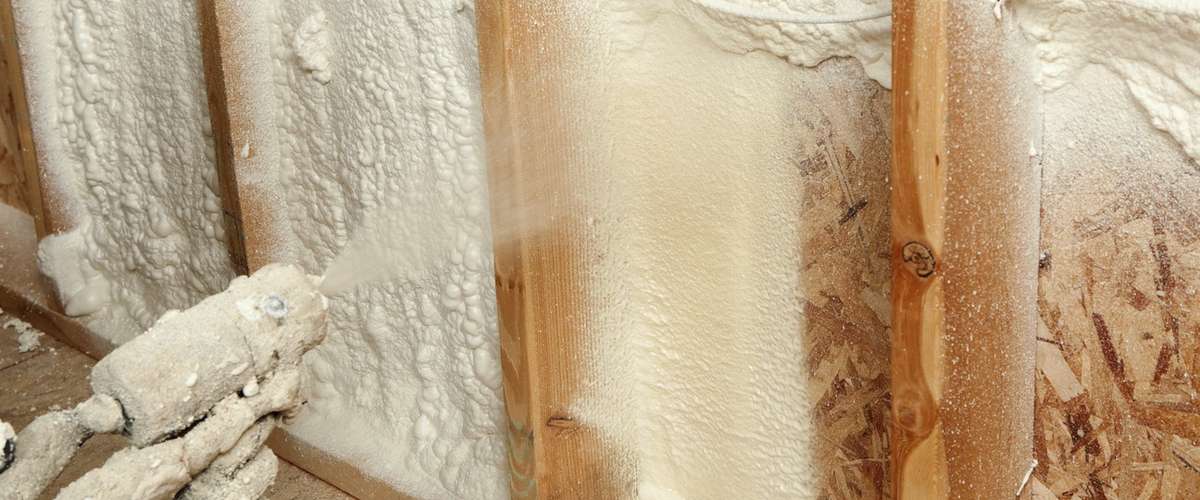Spray foam insulation has gained popularity in recent years as an effective method for insulating homes, offering numerous benefits over traditional insulation materials. However, with its rise in use comes the question: is spray foam insulation a safe choice for your home? This article delves into the advantages and potential risks associated with spray foam insulation to help you make an informed decision.
What is Spray Foam Insulation?
Types of Spray Foam Insulation
Spray foam insulation is a chemical product created by mixing and reacting two components, isocyanate and polyol resin. This mixture is sprayed onto surfaces where it expands and hardens into a solid foam. There are two main types of spray foam insulation:
- Open-cell Spray Foam: This type is less dense, more flexible, and generally has a lower R-value (a measure of insulation effectiveness) compared to closed-cell foam. It is ideal for interior walls and hard-to-reach areas.
- Closed-cell Spray Foam: Denser and more rigid, closed-cell foam has a higher R-value and is excellent for exterior applications, roofs, and areas where moisture resistance is crucial.
Benefits of Spray Foam Insulation
Spray foam insulation offers several advantages, including:
- Superior Insulating Properties: Both open-cell and closed-cell foams provide excellent thermal insulation, helping to reduce energy costs.
- Air Sealing: Spray foam acts as an effective air barrier, preventing drafts and improving indoor air quality.
- Moisture Barrier: Closed-cell spray foam, in particular, offers superior moisture resistance, reducing the risk of mold and mildew growth.
- Longevity: Properly installed spray foam Insulation contractor can last for decades without significant degradation.
Safety Concerns Associated with Spray Foam Insulation
Chemical Composition and Off-Gassing
One of the primary safety concerns with spray foam insulation is its chemical composition. The installation process involves the mixing of chemicals that can produce harmful fumes, known as off-gassing. These fumes can be hazardous if inhaled, particularly during the application and curing process.
Potential Health Risks
Exposure to the chemicals used in spray foam insulation can cause various health issues, including:
- Respiratory Problems: Inhalation of isocyanates, a component of spray foam, can lead to respiratory issues such as asthma and bronchitis.
- Skin and Eye Irritation: Direct contact with the uncured foam can cause skin and eye irritation.
- Allergic Reactions: Some individuals may experience allergic reactions to the chemicals in spray foam insulation.
Installation Safety
Proper installation is critical to minimizing health risks associated with spray foam insulation. Poorly installed foam can result in incomplete curing, leading to prolonged off-gassing and potential exposure to harmful chemicals. It is essential to hire experienced, certified professionals to ensure safe and effective installation.
Long-term Safety and Environmental Impact
Indoor Air Quality
Once properly cured, spray foam insulation generally does not pose significant health risks. However, any residual off-gassing can impact indoor air quality, particularly in tightly sealed homes. Ensuring proper ventilation and air exchange can help mitigate these effects.
Environmental Considerations
The production and disposal of spray foam insulation involve environmental concerns. The chemicals used in its manufacture are derived from petroleum, contributing to fossil fuel consumption and greenhouse gas emissions. Additionally, the disposal of spray foam insulation can be challenging due to its non-biodegradable nature.
Mitigating Risks and Ensuring Safety
Choosing the Right Product
Opting for spray foam products with lower volatile organic compound (VOC) emissions can help reduce the risk of off-gassing and improve indoor air quality. Look for products that are certified by reputable organizations for low emissions and environmental impact.
Professional Installation
Hiring certified and experienced professionals for the installation of spray foam insulation is crucial. They will follow proper safety protocols, use appropriate personal protective equipment (PPE), and ensure that the foam is correctly mixed and applied to minimize health risks.
Post-Installation Measures
After installation, it is essential to ventilate the area adequately to allow any residual fumes to dissipate. Regular monitoring of indoor air quality and maintaining proper ventilation can help ensure a safe and healthy living environment.
Conclusion: Is Spray Foam Insulation a Safe Choice?
Spray foam insulation offers numerous benefits, including superior insulating properties, air sealing, and moisture resistance. However, its safety largely depends on the quality of the product and the expertise of the installation team. By choosing low-VOC products and ensuring professional installation, you can mitigate the potential risks associated with spray foam insulation and enjoy its many advantages.
Ultimately, when considering spray foam insulation for your home, it is crucial to weigh its benefits against the potential health and environmental risks. With proper precautions and informed decision-making, spray foam insulation can be a safe and effective choice for enhancing your home’s energy efficiency and comfort.
